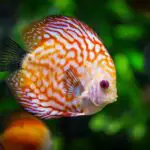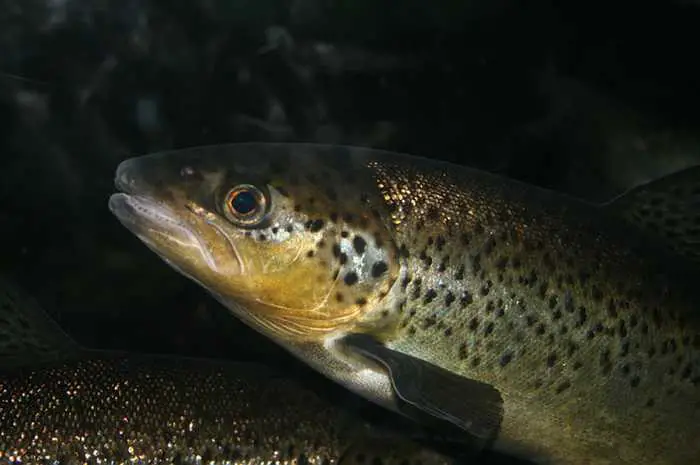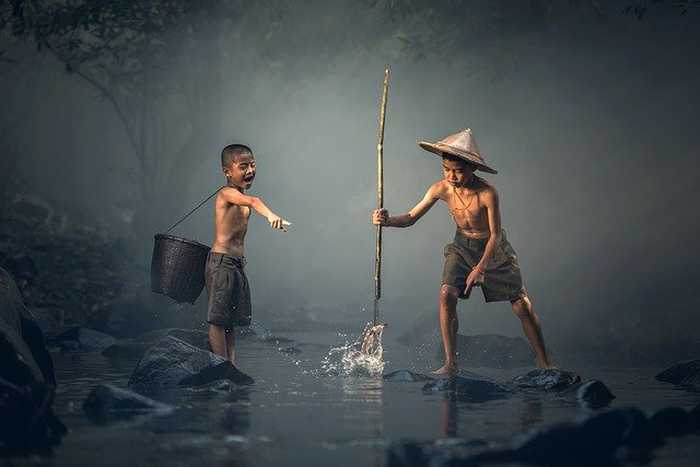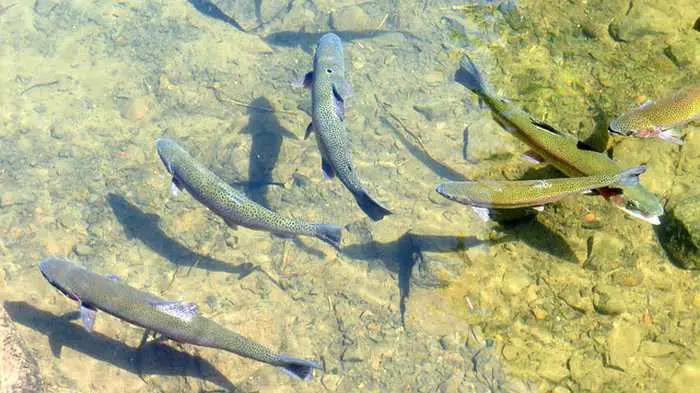You might think that crappie would be less active in the winter, but actually, they can be quite active at night. One way to catch more winter crappie is to fish at dusk or during the evening hours. Changing light conditions will often trigger feeding activity. If you are fishing for winter crappie through the ice at night, be sure to put ice fishing safety measures into practice, and take a fishing buddy along on your trip.
1. What is the best time of day to fish for crappie?
In the case of crappie, the best time to catch them is during their feeding time. This is most frequently between the hours of midnight and 2 am. Additionally, during dawn and dusk can be good times to catch them, with many of them also feeding during these twilight hours.
Crappie are relatively easy to catch once you know when they feed and where they like to congregate. During the day, they tend to stay in deep water near structure such as logs, brush piles, or docks. They move into shallower water to feed primarily at night. Look for areas where there is an abundance of baitfish; crappie will often be nearby feeding on them.
The best way to fish for crappie is using live minnows under a bobber or jigs tipped with live bait or plastics fished vertically along drop-offs and other structures in Crappie-friendly waters. When fishing at night, it’s often helpful to use a flashlight so you can see your line and watch for bites.
2. Does the weather affect when crappie bite?
The weather can definitely affect when crappie bite. A heavy rain can change their feeding habits, so what works on most days may not be as effective. However, there are still some general tips that you can follow to try and catch them.
For example, during a heavy rainstorm, the crappie may move to deeper waters to avoid the storm. They also may not be as active since they don’t want to expend energy swimming in rougher water conditions. So, you may want to try fishing in deeper waters yourself and using bait that is heavier so it will sink down to where the fish are hiding.
Another thing to keep in mind is that the barometric pressure can also affect crappie biting behavior. If the pressure is high, they are more likely to bite since they feel secure in their environment and aren’t as easily spooked by predators or other threats. But if the pressure drops suddenly, they may become more skittish and harder to catch. So it’s always good to keep an eye on the forecast and adjust your fishing accordingly.
Overall, there is no one answer for whether or not weather affects crappie biting behavior since it can vary depending on the specific situation.
3. What type of bait do crappie prefer?
Minnows, worms, insects – just about anything can catch a crappie’s attention. You don’t have to worry about the color of the bait, and you’re only throwing them what they would be eating anyway. Minnows are hands-down the favorite used by most, and some even tip a jig with a live minnow for a double-whammy.
So what type of bait do crappie prefer? It really depends on what they’re feeding on at the time. If minnows are plentiful, then that’s probably what they’ll go for. But if there are lots of insects around, they may go for those instead. The key is to offer them something that looks like food and is easy for them to eat.
4. How can you tell when a crappie is biting?
Crappie are a species of fish that are known for their delicate and tasty flesh. They are popular among anglers because they can be caught in large numbers and provide good eating. However, crappie can be difficult to catch because they are very shy and easily spooked. In order to have success when fishing for crappie, it is important to know how to tell when they are biting.
There are a few things that you can look for when trying to determine if a crappie is biting. First, you will want to pay attention to the line on your rod or reel. If you see the line moving or twitching, this is a good sign that a fish is nibbling at the bait. Another way to tell if a crappie is biting is by watching the float or bobber attached to your line. If the float starts moving around erratically, it likely means that a fish has taken hold of the bait. Finally, you can also feel whether or not a fish has bitten by paying attention to the tension on your line. If you feel something tugging or pulling on the line, there’s a good chance that you’ve got a bite!
Knowing how to tell when Crappies are biting is half the battle when it comes to catching them.
5. Do all lakes have crappie?
No, not all lakes have crappie. In fact, some lakes don’t have any fish at all! Crappie are a type of freshwater fish that is found in many North American lakes, but not all of them. There are many different factors that can affect whether or not a lake has crappie, such as the climate, the vegetation, and the other types of fish that are present.
6. Are there certain times of year when it is better to fish for crappie?
There are definitely certain times of year when it is better to fish for crappie. Just after sunrise and an hour before sunset during warmer months seem to be the best times, although nighttime can also produce good results during those months. During colder months, midday usually seems to be the best time to go out, when the air temperature is warmest. This pattern seems to hold true for both black and white crappie.
So why are these particular times generally more successful for catching crappie? One reason may have to do with feeding habits. Crappie are most active in pursuit of food at dawn and dusk, so that’s when they are likely to bite. Additionally, water temperatures play a role – in general, crappie prefer waters that are between 60 and 70 degrees Fahrenheit. So again, targeting those hours when the air temperature is warmest will give you the best chance of finding fish that are comfortable and actively feeding.
Of course, there are always exceptions to the rule – every fisherman has had a great day (or night) out even when conditions weren’t ideal according to “the rules” But if you want your odds increased for a productive outing, paying attention to time of day (and year) can make all the difference.
7. What size should my hook be when fishing for Crappie?
The best size for a crappie fishing hook is dependent on the size of the crappie you are hoping to catch. If you are targeting large crappies, then using a larger hook, such as sizes four or six, would be your best bet. However, if you are going for small size crappies or the area you are fishing is known to have small size crappies, then using a smaller hook, such as size two, would be more effective.
8. What is the world record for the biggest Crappie ever caught ?
It’s official, Lionel Ferguson’s 5-pound, 7-ounce black crappie is the new IGFA All-Tackle world record! Caught on May 15, 2018 in Richeison Pond, in Loudon County. May 16, 2018 was a historic day for anglers around the world. On that day, Lionel Ferguson caught a black crappie that weighed in at 5 pounds 7 ounces. This catch officially breaks the previous world record for the biggest Crappie ever caught. This is an incredible feat, and it is one that will likely stand for many years to come. The previous record was held by an angler from Texas who caught a 4 pound 12 ounce Crappie back in 2001. Ferguson’s catch is truly remarkable, and it just goes to show what can be accomplished with dedication and skill. Congrats to Mr.
9. Where in the United States are good spots to catch Crappies ?
There are many great spots to catch Crappies in the United States. Some of the best include Neely Henry in Alabama, Pickwick Lake in Tennessee and Alabama, Wister Lake in Oklahoma, Ft. Gibson Lake in Oklahoma, and Lake Guntersville in Alabama. Arkabutla Reservoir in Mississippi is also a great place to catch Crappies.
10 . Can I keep every Crappie I catch ?
In most states, the answer to this question is no. Each state has its own specific regulations regarding how many fish of a certain species can be caught and kept, and these regulations are usually based on the size of the fish. For crappie, the limit is usually 10-25 per day, depending on the state. Some states also have regulations regarding the size of the crappie that can be kept – for example, in Texas, all crappie must be at least 10 inches long in order to be legal to keep.
It’s important to familiarize yourself with your state’s fishing regulations before heading out on a fishing trip – not only will this help you make sure you’re staying within the law, but it will also help ensure that you’re taking care of our fisheries and helping to sustain them for future generations.





